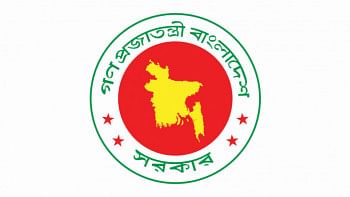Higher education values - Myths and realities

In 1921 two universities were set up in the larger geographical area of what was then known as Bengal – one in Dhaka, and the other in Santiniketan. Both the University of Dhaka and the Visva-Bharati University, which was a dream project of Rabindranath Tagore, began with a mission to impart the best education to their students who would be active questers of truth and would turn out to be ideal, ethical and enlightened individuals cultivating values that both the eastern and western civilisations cherish. While the University of Dhaka didn't have a goal-specific mission statement which would guide its educational and other activities, it was nevertheless implied in the optimism the founding fathers felt about the university and in the activities of the educators who came from both parts of Bengal as well as from England. Tagore's university, however, had a Constitution, which specifically stated that its primary objective was to 'study the mind of Man in its realisation of different aspects of truth from diverse points of view.' A year later, Tagore wrote an essay titled 'An Eastern University' which was published initially as a bulletin of Visva-Bharati and was later included in his 1926 book Creative Unity. There, he reiterated his belief that a university's primary object should be 'the constant pursuit of truth,' but warned that in doing so, a university should not become 'a dead cage' where 'minds are fed with food artificially prepared.'
Although both the universities shared a common objective in generating and disseminating knowledge, and in realising ethical, aesthetic, individual and social aims, their histories and the way they were run were different. While Visva-Bharati was set up on Tagore's personal initiative and funding, the University of Dhaka was established by the British as a compensation for the loss of political agency of the Muslim population of East Bengal who had strongly supported the partition of Bengal in 1905. Visva-Bharati was designed to realise the ideals of Tagore's 'eastern university' and was seen as a meeting place of the east and the west, where people offered 'their intellectual hospitality, their wealth of mind to others,' and earned 'their proud right in return to receive gifts from the rest of the world.' Visva-Bharati also reflected Tagore's appreciation of Ralph Waldo Emerson's idea of a scholar as somebody who is a 'Man Thinking' rather than 'a mere thinker, or still worse, the parrot of other men's thinking' – one whose mind develops under the influence of the past (which is manifest in the wealth of knowledge contained in books) and one who imbibes in him the values that nature instils (Emerson, 'The American Scholar,' 1837). The University of Dhaka, on the other hand, was modelled on Oxford as a residential university where Deans were leading academic administrators and where students attended tutorial classes along with general classes in their subjects. The idea was clearly to get a world class model which the university would attempt to emulate.

Both the universities began with a great deal of promise, and if the initial academic and extra academic performances of the scholars were any indication, both appeared set to realise at least a part of their mission goals. The University of Dhaka gathered together a formidable faculty whose name and fame spread beyond the border of Bengal to the rest of India and beyond. Both universities maintained their progress even in circumstances that were not always conducive to learning, and in this, the University of Dhaka played a stronger role. In 1947, with the partition of India, a large number of its faculty left for India. Throughout the turbulent years of Pakistan rule, the university was under attack for its promotion of culture and critical thought, and for the active involvement of its students and faculty in realising the rights of Bangalis.
In 1971, the Pakistanis killed some of the most prominent and talented teachers of the university and quite a large number of its students and employees. That loss was irreparable, but the university did not lose its focus and its mission to deliver higher education values. By 1971, some other universities had also emerged, which, together, took up the challenge of laying out both a strong foundation and a superstructure of our higher education.
But the decline in the universities, ironically, also began in the 1970s. The first indication was a sudden shift from the earlier global orientation of the universities to a local, even parochial one. This happened when we abandoned English as the medium of instruction in favour of Bangla, without any clear idea as to how effectively we could use the language in the classroom. There is no doubt that delivering higher education in Bangla had been—and still remains—a long cherished ideal, but it needed effective planning, resources and a staggered time frame for its implementation. Instead of working out a realisable and a phase-wise plan, we plunged at it with no preparation. At a time when the universities faced reduced funding and an increasing pressure to accommodate a swelling student population, switching to Bangla proved counterproductive. Most subjects (and almost all subjects in Science) had no text books, let alone reference books, in Bangla. The country simply couldn't afford to finance the huge translation project needed for such a shift. And as English faced neglect, the universities failed to produce the pool of translators needed for the project. One ambiguous and ironic outcome of the hasty shift to Bangla has been a loss of effective cultivation of that language in our classrooms. Today an overwhelming number of entering students have practically no proficiency, not only in English, but in Bangla as well. In my department, English, which draws most of its students from the top 10% of the entrants, I have been noticing for the last 10-15 years that most students have less than satisfactory proficiency in both these languages.

A second reason for the decline of our universities has been an undue intrusion of national party politics which has proved deadly and divisive, and has diverted the precious energy and time of many of the students and faculty to pursuits that are directly contradictory to the goals of education. Throughout the 1970s and 80s, students, in the tradition of student movements during the Pakistani days, opposed unfair and oppressive regimes and the suppression of rights. Teachers also actively supported them, and the end result was the overthrow of a dictatorial and corrupt regime. There were ideological divisions among the students (as well as the faculty), no doubt, but this did not lead to wide scale violence, as they fought for a common goal. But after 1991, with the return of democracy, ideology and patriotism-driven politics was replaced by narrow party politics with its promise of perks, privilege and power. Education suffered. Higher education lost some of its ideals. An active involvement with the generation and dispersion of new knowledge, promotion of critical thinking, truth and values, and realisation of individual and social responsibilities was replaced by rote learning and certificate driven education, while the faculty struggled to toe the line between satisfying market demands and responding to ethical values. Tagore's disappointment with the state of education of his time echoes our present fear that 'our educated community is not a cultured community, but a community of qualified candidates.' We may even have failed to produce qualified candidates for a wide range of knowledge related enterprises. We produce qualified candidates for BCS examinations for sure, but fail to produce graduates who can match up with those expatriates who occupy super manager posts in our industries and corporate offices, and who scoop out 4.5 billion dollars from our country every year.
A third reason of the decline of our higher education has been our inability to plan for the rising number of students, and design our classrooms and curricula to suit their needs, and ensure funding for an inclusive higher education which would deliver the same quality in every discipline and every institution. One exemplary success of our higher education has been its affordability, but we haven't been able to make it accessible to all. But with a rising youth population—a large part of which does finish the 12-year school and college education—we should have planned for more universities and specialised educational institutions in advanced, built infrastructures and facilities, and ensured increased funding each year. But if anything, we've done the reverse. Today, out of every 6-7 students who try for admission in higher education institutions, only one succeeds. To accommodate the rest, private universities have come up—'mushroomed,' to be more precise. Some of the top private universities are indeed providing quality education, but it comes at a price. The others are simply doing what is known here as 'certificate trade.'
If we look at our higher education, value wise, it gives us a dispiriting picture. Not only have we forsaken our earlier aim of ethical education and a comprehensive knowledge base for our learners which would enable them to compete against the best graduates anywhere and make them humane, we have increasingly moved away towards a job market- driven education that is not expected to produce Man Thinking but Man Parroting others' thoughts, and memorising notes handed down by teachers and coaching centres. In no other country are coaching centres allowed to operate with such destructive force. With the introduction of public examinations at the end of Class V and Class VIII, coaching business has expanded to rural areas, drawing ever-increasing numbers of primary and post primary level students. Coaching centres have assumed a parallel existence to the school and college systems, threatening to reduce all education to memorising notes and hand-outs instead of an active engagement with books, classroom teaching, creative learning and participatory education.
The problem has been compounded, and turned nearly intractable, by a lack of political will to pursue a quality based, value added and knowledge generating education, which needs large scale funding. Successive governments have maintained funding in this sector at a level not more than 2.2 percent of our GDP, although worldwide there is a strong consensus that for a substantial and sustainable improvement in education, the figure should be at least 6 per cent, or 25 percent of the national budget outlay. The present government has made considerable effort to improve enrolment, distribute text books free of cost, and upgrade classrooms and curricula, but there is no commitment to increased funding. As a result, teachers remain poorly paid, who then supplement their income by private tutoring. And because of the extra burden it puts on them, they fail to deliver their best in the classroom. This in turn drives students to fill up the gap by taking private lessons either from the same teachers or coaching centres. So the cycle continues.
It is of course true that many teachers still perform according to the best of their abilities in the classroom, and stay out of coaching business. But their number is not enough to put them in the majority. And with no immediate prospect of a sea change in the scene, we can assume that the future will be pretty much the same – poor schools, poor performance in language, math and the sciences, and coaching centre based learning and eventually, graduates without the required knowledge and skills needed to be globally competitive. This unfortunately, threatens to the general picture of our education in the coming years.
Talking about our higher education values, we need to revisit the earlier days of our universities and institutions of higher learning and see how they persisted with a vision to achieve excellence in all our academic activities and produce and distribute knowledge that would enlighten each mind. We realise, at this distance of time, that Tagore's ideas and those of the founders of the University of Dhaka largely rested on the myth of human transcendence, which had very little possibility to materialise in an age of colonial domination. Still, there was an innocence about the myth that was not at odds with the simple yet lofty aspirations of a generation of creative and critical tinkers. They were willing to work towards it; and the intellectual and cultural make up of the age seemed to bear them out. Tagore and other thinkers about education put their faith in the power of the mind to create and rise above material limitations. But today, in the age of late capital and globalisation, when everything comes with a price tag, persisting with the myth of human transcendence sounds quite hopeless. In a society where a high end profession, a government job and a position of power are considered more important than the pursuit of knowledge for its own sake, it is difficult to sustain one's belief in the ideals that the myth promotes. But nevertheless we continue to believe in the myth that education completes a man; that education creates an ideal being; that the pursuit of truth is our greatest good. Perhaps we do so because we still refuse to abandon our dreams. When this happens, when we cease talking about education creating active thinkers and change agents, ethical citizens and the finest of minds, we will complete our surrender to money and the material world.
But values in higher education cannot be achieved and guaranteed if we continue to view higher education in isolation from the stages which precede and shape it – the primary, secondary and higher secondary education. Without an ideal, creative and meaningful primary education, which provides a learner's basic building blocks, there cannot be a quality secondary or higher secondary education. When students who haven't proceeded through internationally benchmarked levels of education in their twelve years of schooling come to the university, they cannot be expected to perform and deliver according to what the universities consider their mission values. Only a holistic view of education can ensure that both quality and value are ongoing concerns from the primary phase to the tertiary.
If a holistic approach answers some of our concerns about ethical, value based education, there are many other factors that we should address before picking up higher education as our field of enquiry and focus. A quick look at some of these factors suggests that our expectations of higher education values hinge on substantial progress in these areas:
• The large number of young people who are denied the ability to read and write without whose involvement we cannot speak about equity and access
• Widespread poverty at the grassroots which denies education to many
• The number of drop-outs at the primary and secondary levels
• Three to four separate streams of education which make achieving a uniform level of quality and competence impossible
• The growing disparity between the income levels of different classes of people which made private universities a welcome option in the first place for those who could afford to pay even the exorbitant fees they often charge. But private universities, with more students in their enrolment now than the public universities offer opportunities to study only in a few selected, 'market-savvy' disciplines. An overwhelming majority of these universities have no focus on values and ethics, which is clearly alarming for our higher education now and in the future
• The rather directionless higher education in colleges under the national university, which suffers from a severe lack of qualified teachers, necessary facilities, libraries and other prerequisites of quality education
• The learning outcome in these colleges is generally poor which is compounded by their primary focus on providing a degree, and not education in the true sense of the term
• Higher education in Bangladesh thus sees three different providers – the state funded public universities which enjoy a semi-autonomous status and are individually administered; the state funded postgraduate teaching and research university, National University, whose main function is to administer graduate and postgraduate level academic programmes in about 1688 affiliated colleges, and the privately funded universities whose number has swelled to nearly 100. These three streams differ in their mission, performance and standards of teaching. As a result, setting up uniform value markers and ethical standards becomes quite impossible.
Higher education values, regretfully, have always remained as myths, never realised in life. I've discussed a few obvious reasons – lack of funding, overcrowding in classrooms, the huge disparities between the public and private universities, lack of libraries, laboratories and other facilities, absence of high quality exams, for example, but there are many more. On a more fundamental level, no quality and value assurance can be given or realised unless education becomes a truly number one state priority and all efforts are directed towards it. A poor school cannot provide quality education; a poorly paid teacher cannot provide the education the students deserve. And with standards going down, despite the phenomenal spread in primary, secondary and higher secondary education, we simply cannot expect higher education values to be commensurate with our expectation.
The writer is a Professor of English at the University of Dhaka, and a novelist, columnist and critic.

 For all latest news, follow The Daily Star's Google News channel.
For all latest news, follow The Daily Star's Google News channel. 



Comments